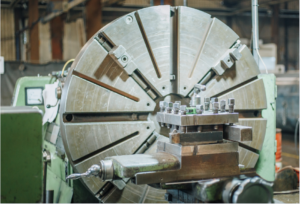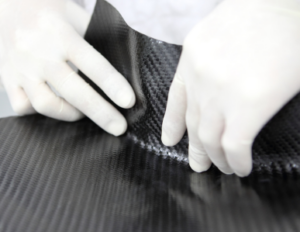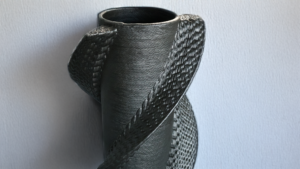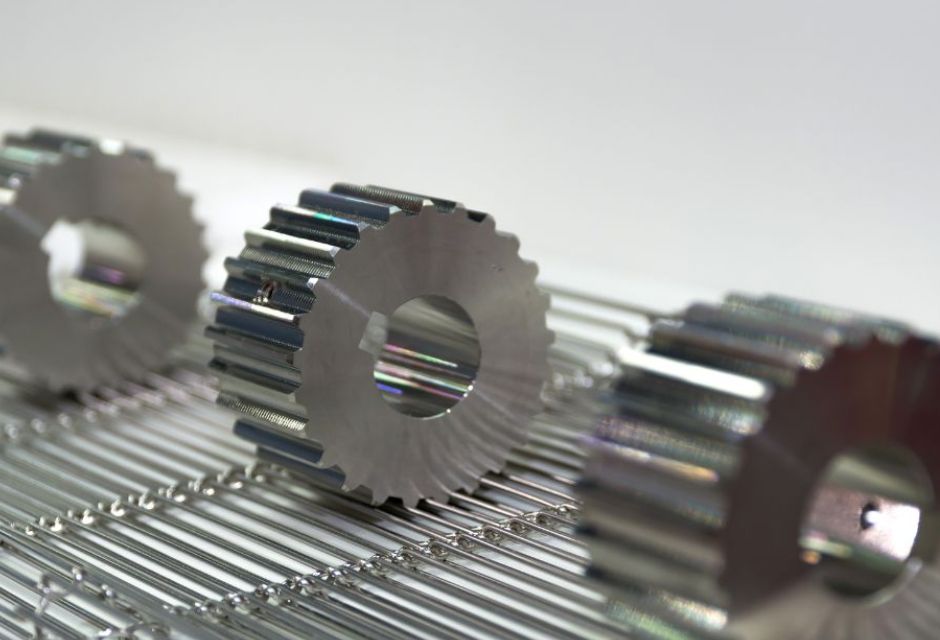
Titanium is a metal with many light and strong properties.
On the other hand, it is also a material that is difficult to cut and process, so it is necessary to take into consideration key points when using it for processing.
In this article, we will explain the characteristics of titanium cutting, the types of titanium used for cutting, and precautions to be taken when cutting.
We also introduce the advantages of using titanium in cutting processes.
For more information about Taiga, click here.Table of Contents
Characteristics of Titanium Cutting|Is it true that machining is difficult?

Titanium is a "difficult-to-machine" material with low machinability due to its properties such as high tensile strength and low thermal conductivity.
The following describes the characteristics of the titanium cutting process.
High tensile strength, requiring skill in processing
Because of its high tensile strength, titanium can cause damage to tools, including chipping of cutting edges during cutting.
While the tensile strength of pure titanium is not so high, about 350-500 MPa, the tensile strength of titanium alloys is higher, about 750-950 MPa, so cutting requires experience and skill.
Heat builds up and tools wear easily.
Titanium also features low thermal conductivity.
Compared to the thermal conductivity of other metals, pure titanium has 17 W/m⋅K, titanium alloys have 7.5 W/m⋅K, and stainless steel has 16 W/m⋅K, indicating that titanium alloys in particular have low thermal conductivity.
The disadvantage of low thermal conductivity is that it does not allow heat to escape during cutting, and tools wear easily.
Easily deformable and difficult to process
Titanium is more easily deformed than other metals.
Young's modulus, the proportional coefficient between stress and strain when a metal is stretched in the same direction, is 193 GPa for stainless steel and 206 GPa for steel, while pure titanium is lower at 106 GPa.
Metals with small Young's modulus are soft and easily deformed, and in some cases may be deformed by vibration and force during cutting.
May ignite by chemical reaction during processing
Although titanium is a nonflammable material, there is a risk of ignition due to a chemical reaction when exposed to oxygen or nitrogen during processing.
Thin chips generated in cutting operations are a source of ignition from welding sparks and other sources.
When cutting titanium, it is necessary to frequently clean the area around the work area to prevent chips from accumulating.
Three advantages of using titanium for cutting
Although cutting titanium is difficult and requires a high level of technical skill, there are various advantages to using titanium for cutting.
Below we will look at the advantages of using titanium for cutting.
Light weight and high specific strength
The advantage of titanium alloys is that they are very light compared to other metals.
Comparing specific gravity with other metals, stainless steel is 7.6 to 8.1 and copper is 8.9, while titanium alloy is 4.43, showing that it is by far the lightest in weight per the same volume.
The specific gravity of aluminum alloys, which are representative of light metals, is 2.6 to 2.8, lighter than that of titanium, but the difference is not that great.
In addition, titanium has a high specific strength. The specific strength of titanium alloys is 225.5 compared to stainless steel's 74.4, or about three times the strength of stainless steel.
By employing titanium in the cutting process, we will be able to create lightweight yet durable products.
High corrosion resistance and low thermal conductivity

Another advantage of titanium is its superior corrosion resistance due to its property of forming a strong titanium oxide film on its surface.
The coating provides strong corrosion resistance to chlorine ions, making it particularly suited to stainless steel in environments where it comes into contact with seawater.
It also has low thermal conductivity, making it difficult to heat up and cool down.
Because of these characteristics, it is widely used as a material for outdoor components, exterior wall materials to prevent salt damage, water bottles, tumblers, and insulated lunch boxes.
Low toxicity and gentle to the human body

Titanium alloys are non-toxic and have high biocompatibility, making them less likely to cause metal allergies.
For this reason, it is also used as a material for ornaments such as earrings, medical equipment, and devices implanted in the body.
Types of titanium used for cutting
Titanium used in cutting can be broadly divided into pure titanium and titanium alloys.
The following list summarizes the characteristics of each type.
| Types of Titanium | feature |
| Pure titanium (JIS Class 1, 2, 3, 4) | Type 1 is the softest, followed by Type 2, Type 3, and Type 4, in that order. |
| Titanium Alloys | JIS 60 class (64 alloy), which has high strength and is used for aircraft, etc., and beta 15-3-3-3 alloy, which has high strength but excellent cold workability. |
Three points to keep in mind when cutting titanium
Below are three points to keep in mind when cutting titanium.
Slow cutting speed and use cutting fluid (clarant)
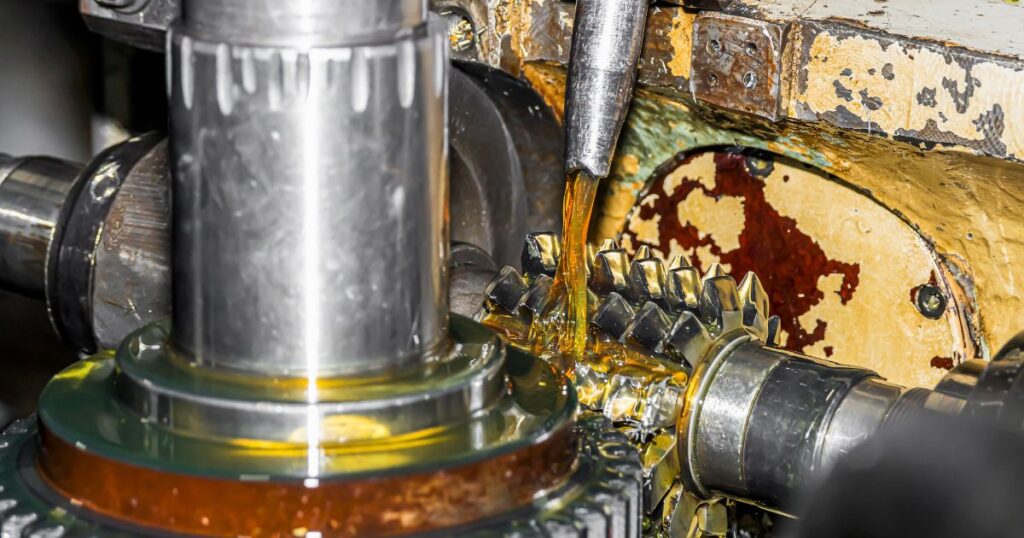
The most important aspects of cutting titanium are measures against heat and vibration.
The higher the cutting speed, the higher the heat generated, so the speed should be as slow as possible.
It is also important to use cutting oil (coolant) to improve machining accuracy while reducing tool wear.
The following types of cutting fluids are available, so you need to choose the one that best suits your application and machining scenario
| Types of Cutting Fluids | feature |
| Water soluble cutting fluid | ・Diluted with water, little risk of ignition, possible deterioration due to bacteria |
| Insoluble cutting fluid | Excellent lubricity, corrosion resistance, and permeability; use without dilution; flammability hazard; precautionary measures required during use |
Thoroughly remove chips and debris.

Titanium may ignite during the cutting process.
Keep the processing site clean and thoroughly remove chips and debris that could cause ignition.
Dry sand and metal extinguishers should also be prepared in case of ignition.
Note that pouring water on ignited titanium may aggravate the fire.
Use appropriate processing machines and tools
In cutting titanium, it is also important to use the appropriate machine and tools for the material.
Let's take a look at the precautions to be taken when cutting titanium for each tool used in the cutting process.
| Types of tools | Points to keep in mind when cutting titanium |
| drill (tool) | Select one with an oil hole for cutting oil to pass through. |
| tap | To prevent hole atrophy due to heat, use different types depending on the application as follows: Hand taps for manual work, spiral taps for stop holes, and point taps for through holes. |
| endmill | ・Select powdered HSS with high wear resistance and TiN coating with high wear and heat resistance to achieve high-speed cutting ・Tungsten carbide end mills with ultra-fine cemented carbide particles may be used to reduce chipping of the cutting edge. |
In addition, materials used for tools include the following
| Material Type | feature |
| HSS (high speed steel) | Metallic components such as chromium and tungsten are added to the steel (powdered HSS is suitable for processing titanium). |
| carbide | A metal that combines tungsten, cobalt, etc. |
| Commonwealth of Nations (formerly British Commonwealth) | Compound made of boron and nitrogen |
| diamond | Low reactivity with titanium, high thermal conductivity and hardness, suitable for titanium processing |
Summary
The features of titanium cutting, types of titanium used, and points to note when cutting are explained.
Although titanium is difficult to cut, its excellent properties such as low thermal conductivity and high hardness make it a suitable metal for many products.
Successful cutting of titanium requires the selection of a supplier that can provide high quality and appropriate methods of machining.
If you are considering manufacturing parts utilizing the titanium cutting process, please contact us.Taiga."Taiga is a free service that allows you to consult with experienced contractors.
We can efficiently proceed with the development of difficult or new parts, small-lot production, prototyping, and mass production while keeping costs low.
For more information about Taiga, click here.
 0120-987-742
0120-987-742